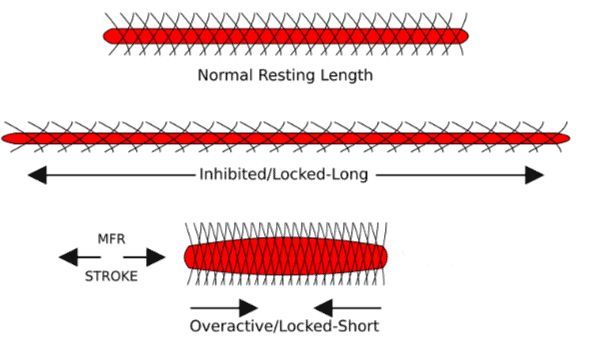It hurts! How do I know if I should stretch or work the muscle?
When my clients have pain or stiffness that they don’t know what to do with, I have a “Sherlock Holmes” method of helping them figure out what it needs to feel better. It’s simple and I want to share it with you.
Muscles are like Goldilocks. They like to be at just the right length, not too long and not too short.
When a muscle is too short, it can show up as things like a cramp in your calf, stiffness in your neck, or just general lack of range of movement. That is an example of a muscle group being “locked short”, where it is wound up so tight it cannot squeeze anymore.
The key indicator for a short muscle is it can give you an intense signal or pain if you physically touch it through massage, prodding, poking, or rolling it – you feel a degree of discomfort ranging from “hurts so good” to “OW MOTHERF*CKER”. The solution is generally to massage the knotted up muscle and lengthen it by stretching.
Sometimes the locked short muscle can be sending pain or stiffness somewhere else. For example, if you have a pain in your knee I will suggest we look at muscle groups above and below. That means massaging the shin and thigh muscles first to see if there’s a muscle locked short. Then we double check to see if the knee pain changed by doing an exercise.
You can tell a locked long muscle through an ache you feel without touching it. Have you ever had your low-back ache after a long car drive? That can mean that it’s “locked long”, meaning it’s TOO noodley and needs to be toned up a bit. It generally needs to be stiffened up through some movement, like reverse planks or hamstring crunches.
Short muscles hurt when you poke them and need to be released.
Long muscles ache without being touched and need to be strengthened back up again.
Sounds simple right? It doesn’t explain EVERY situation, but it’s a strategy that has reliably worked in helping my clients reduce pain in less than 15-20 minutes. You can try this yourself and discover the underlying source of a LOT of bodily discomfort, pain, and stiffness and deal with it proactively.
You don’t need to rest and wait for your body to “reset”. You can take the driver’s seat and learn how to manage, mitigate, and not be afraid of bodily aches and pains.

